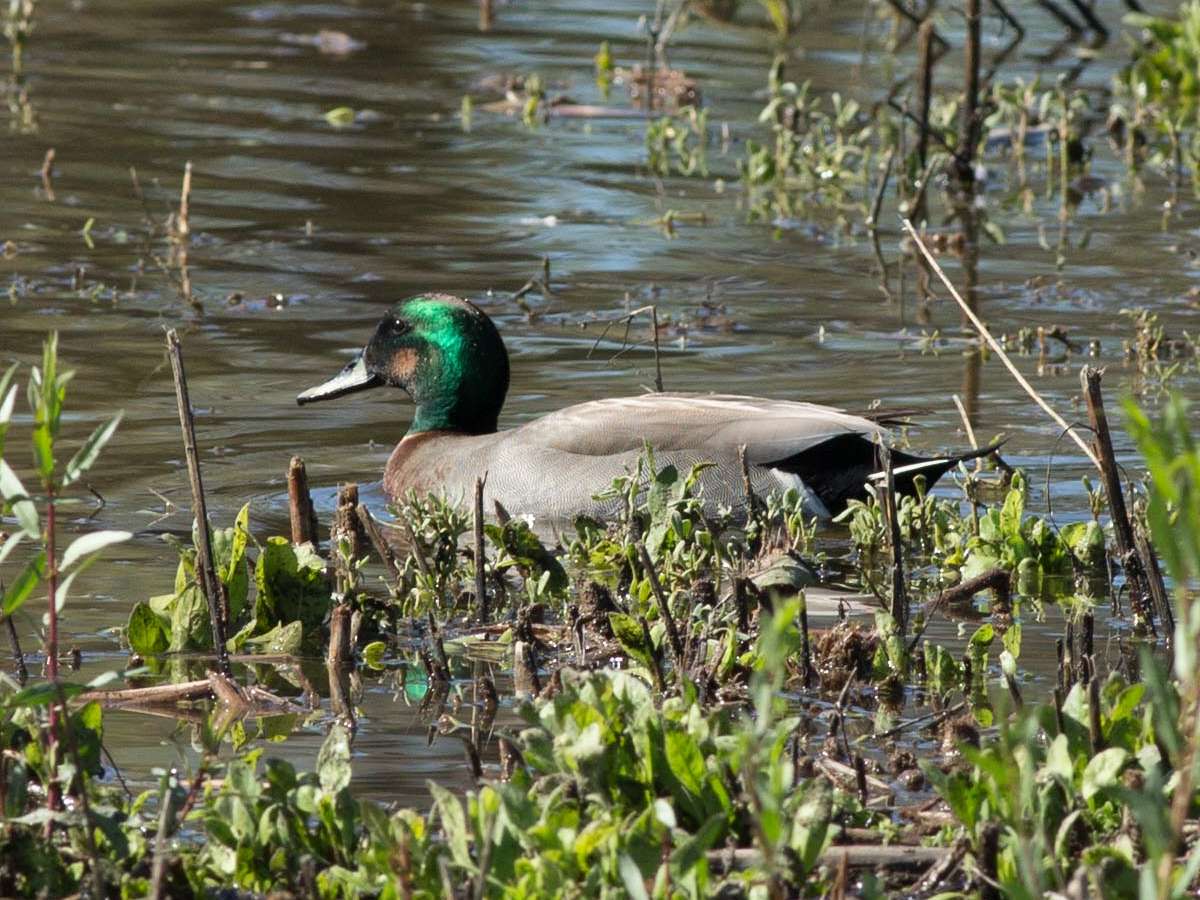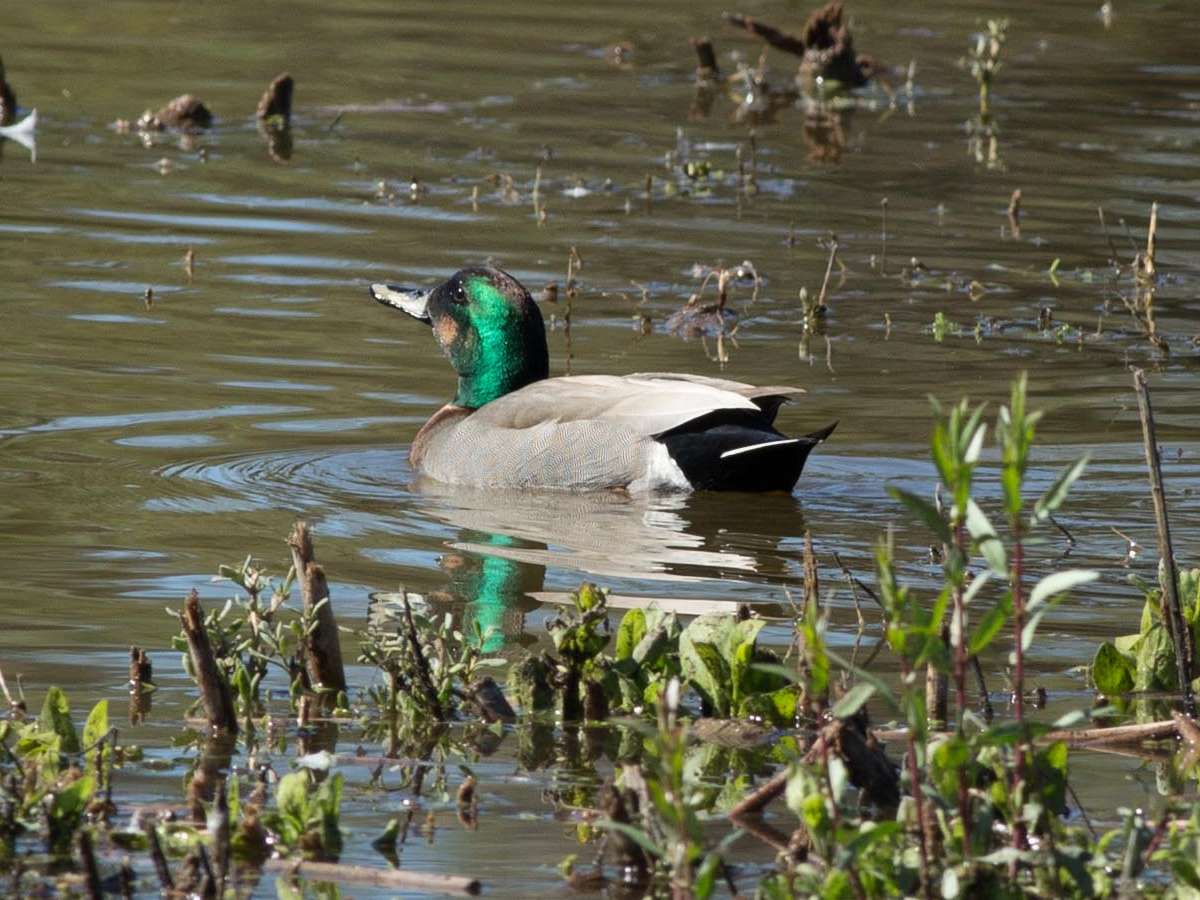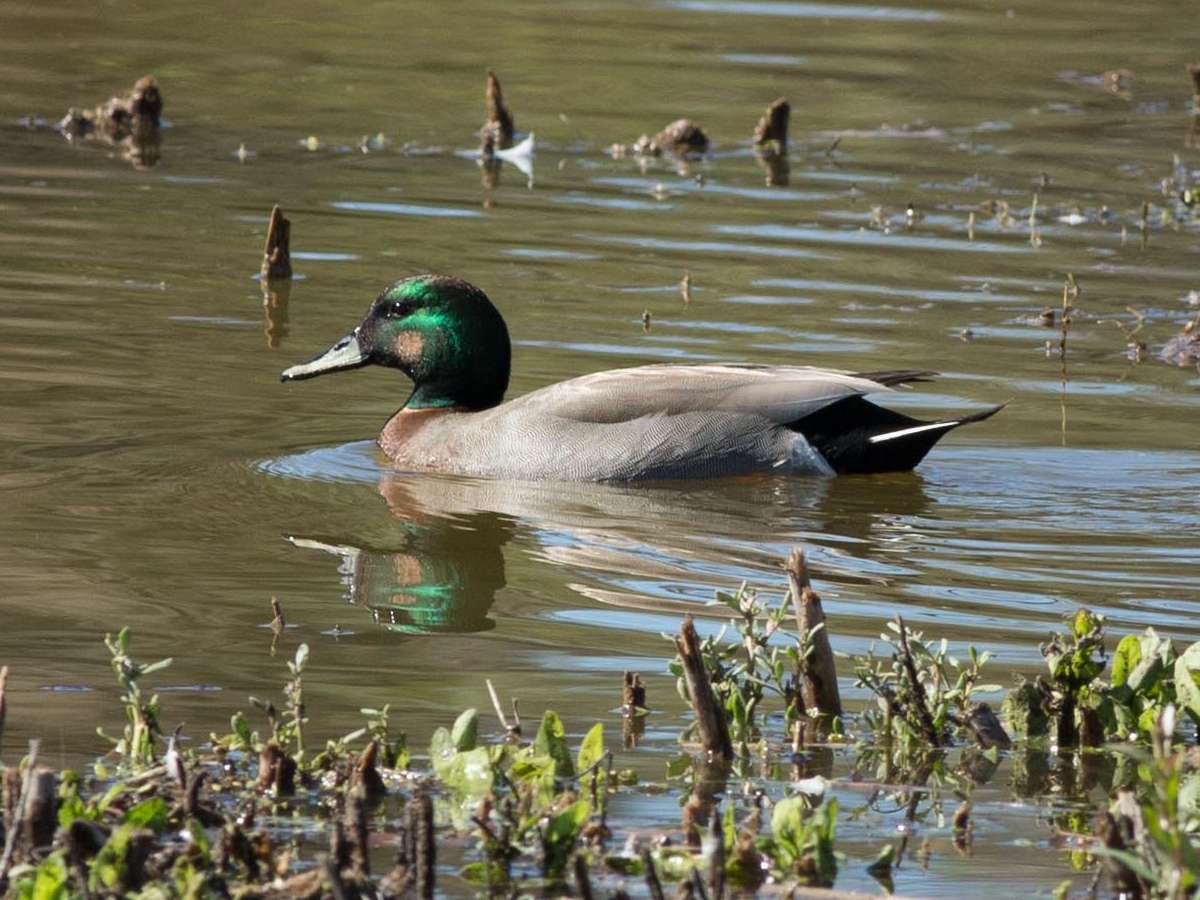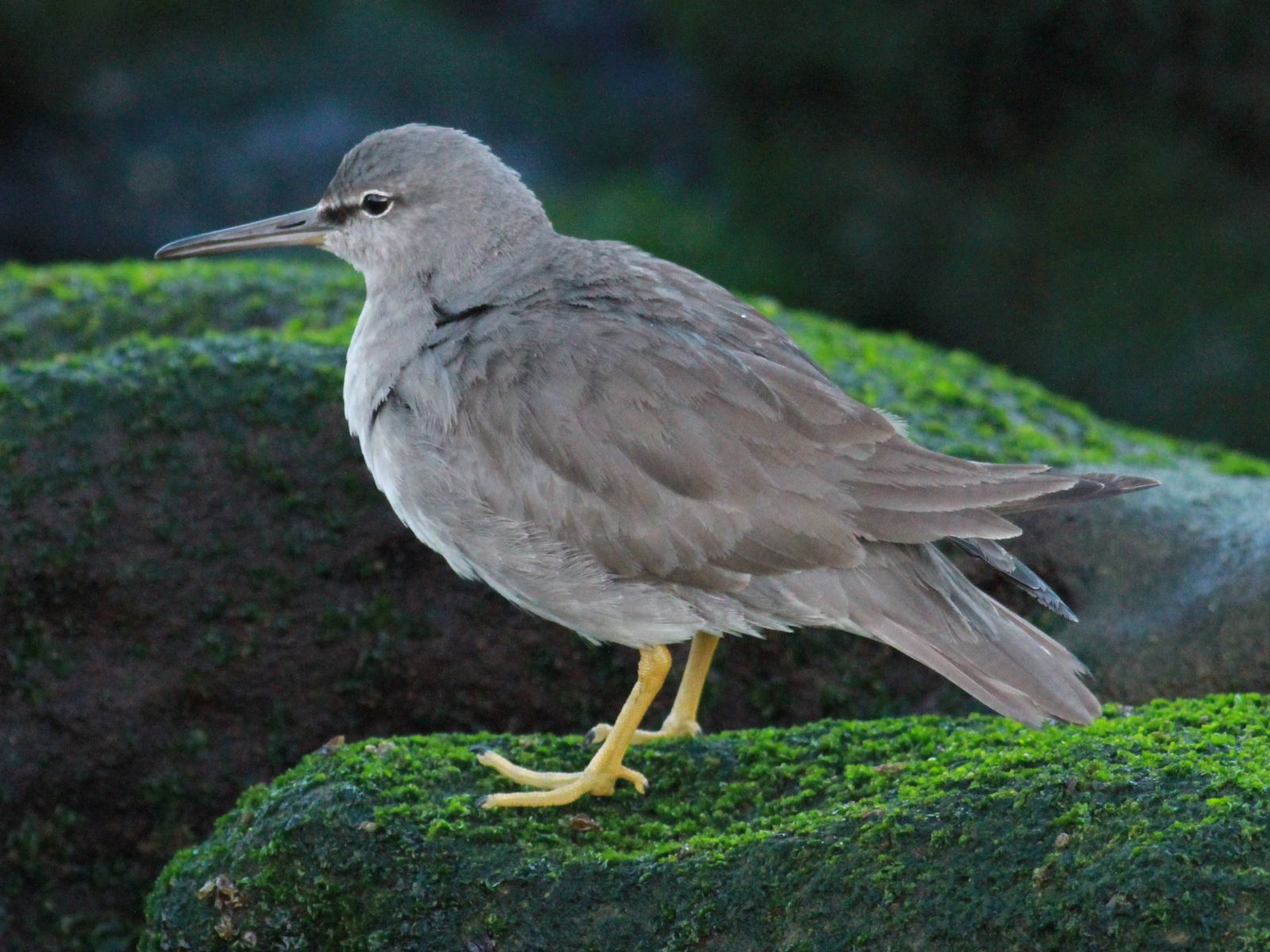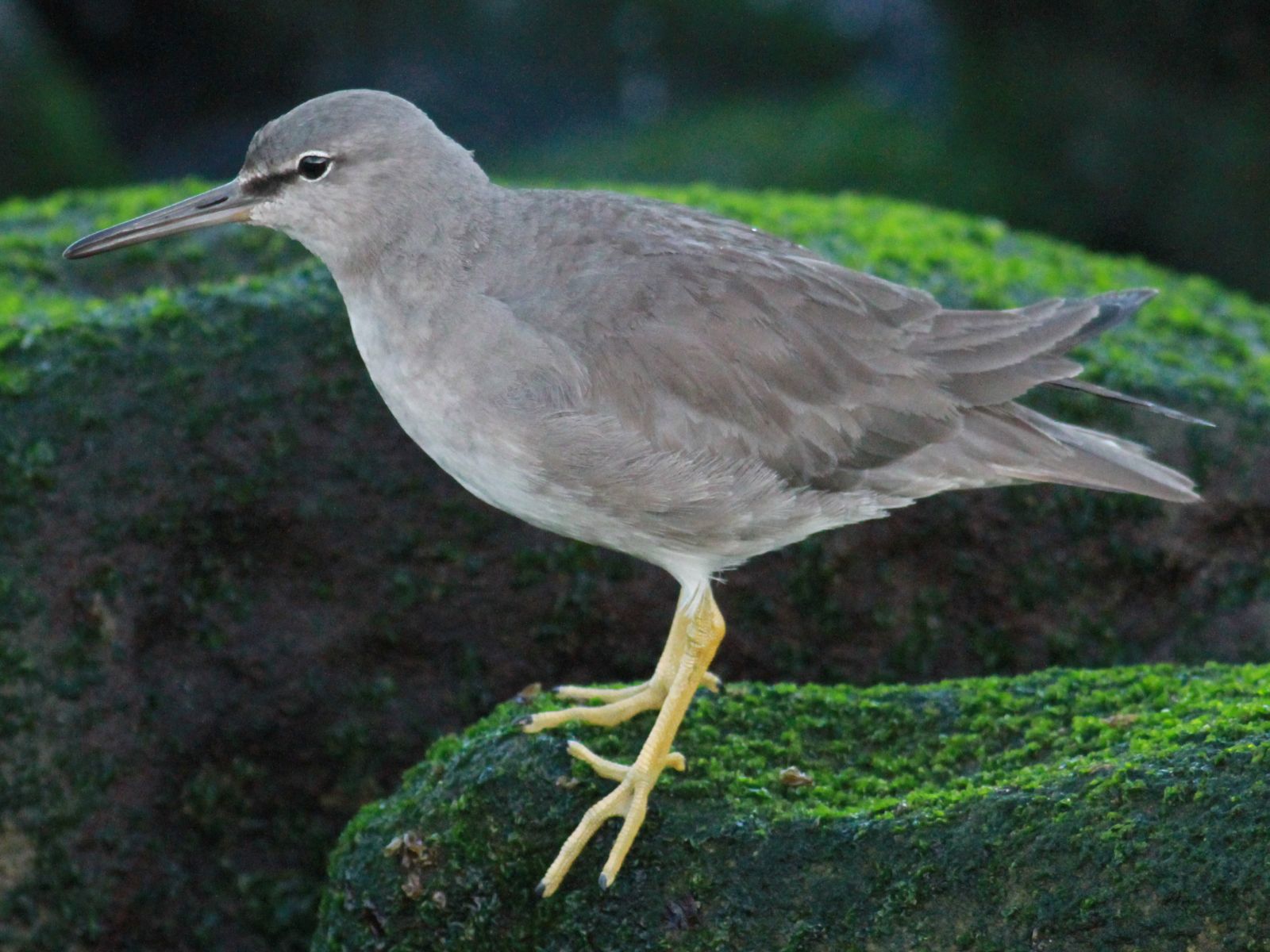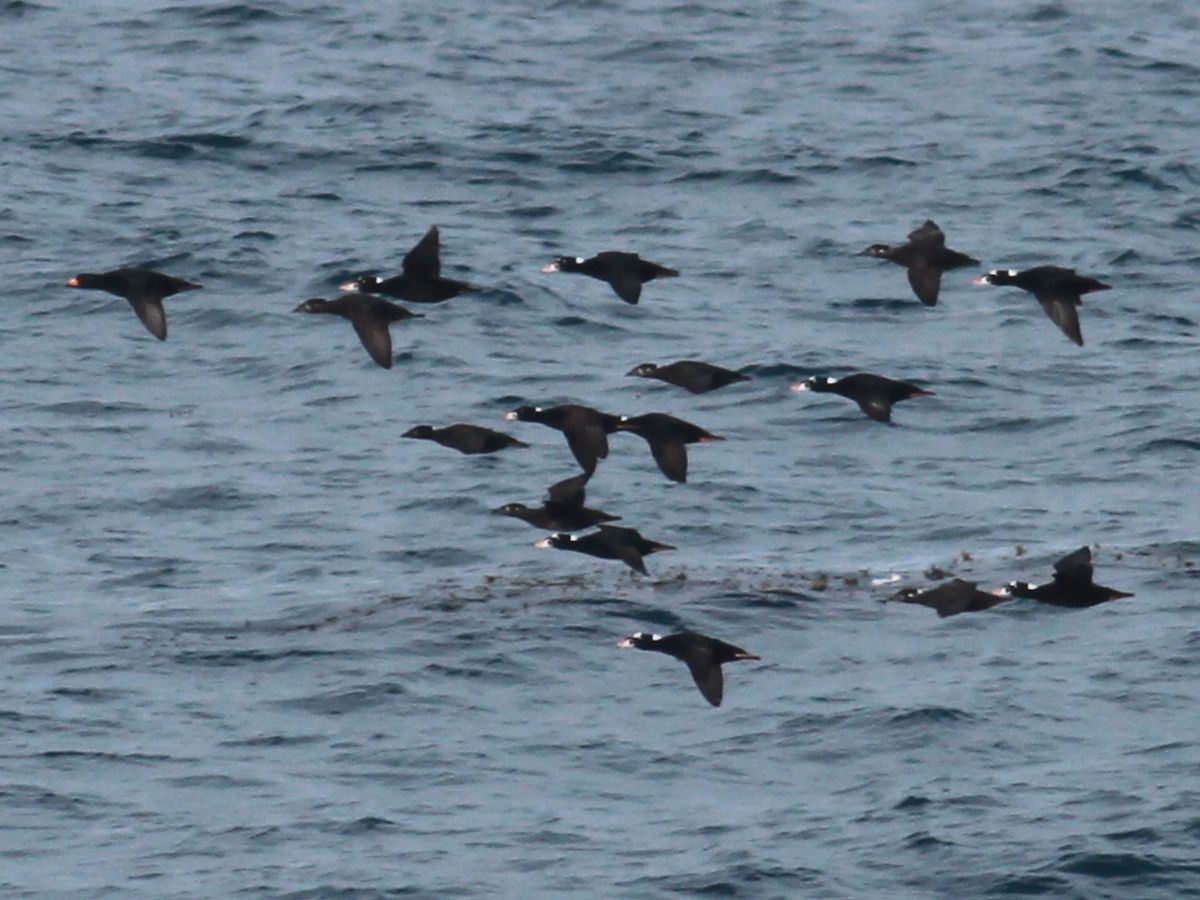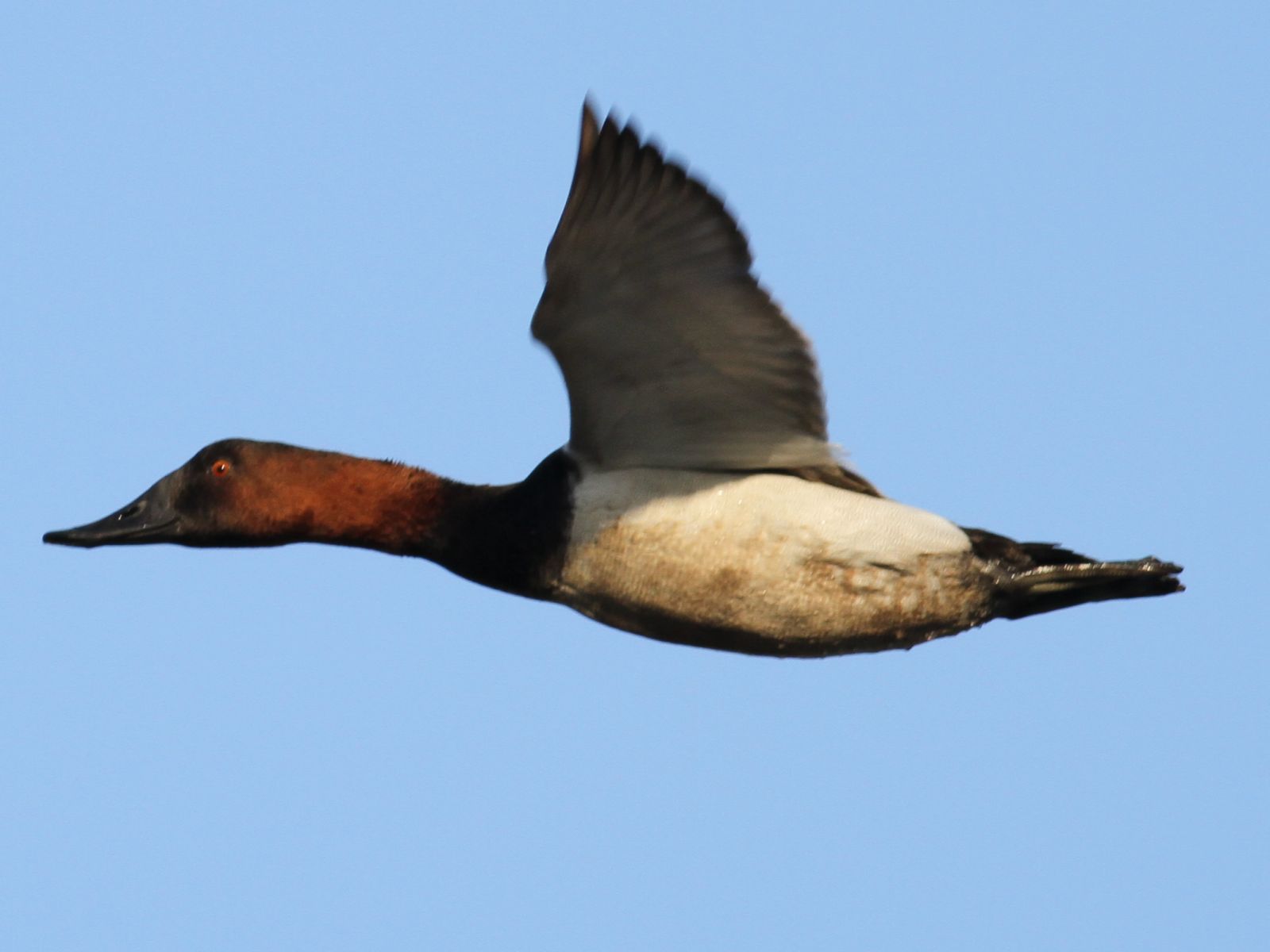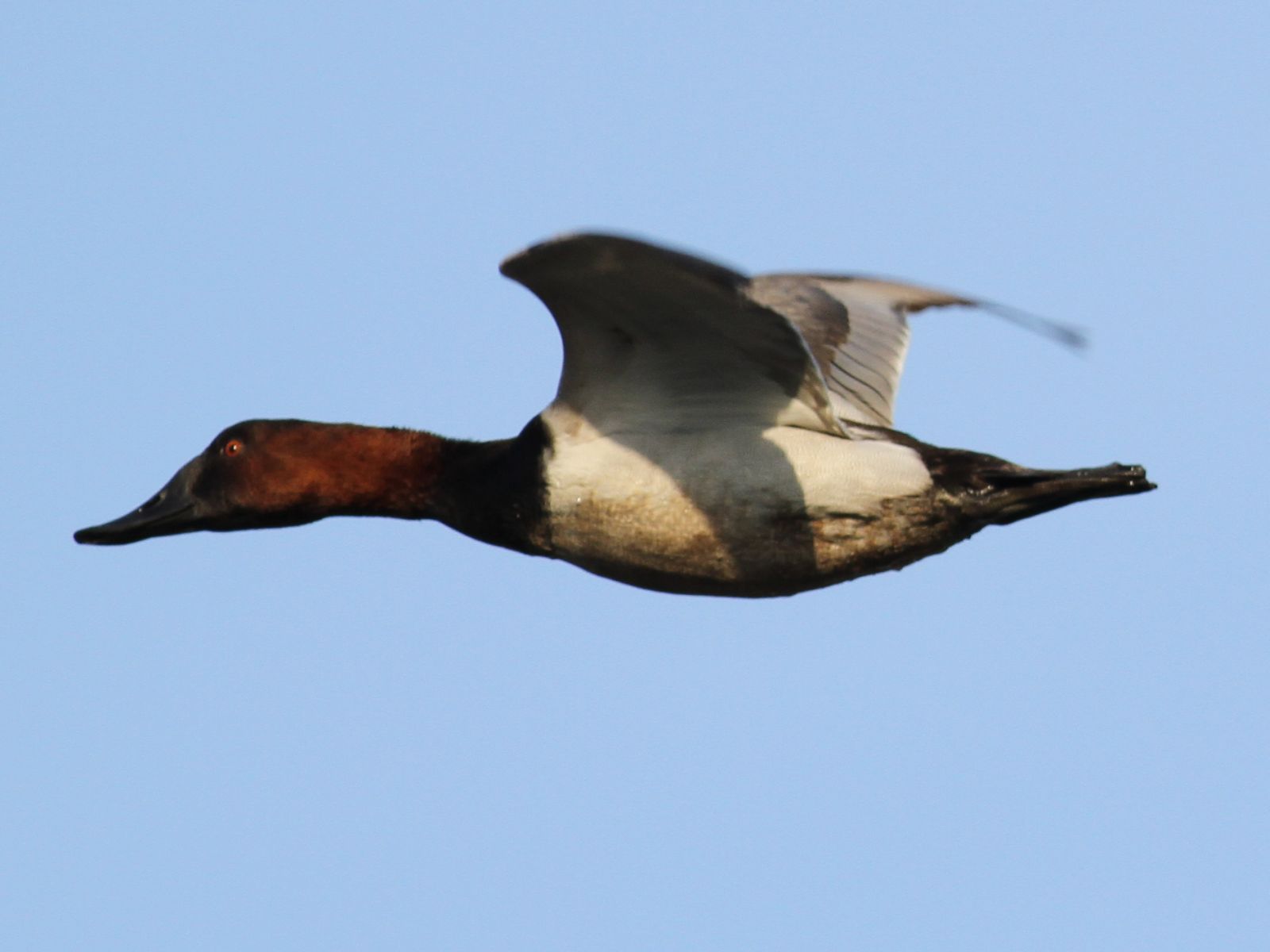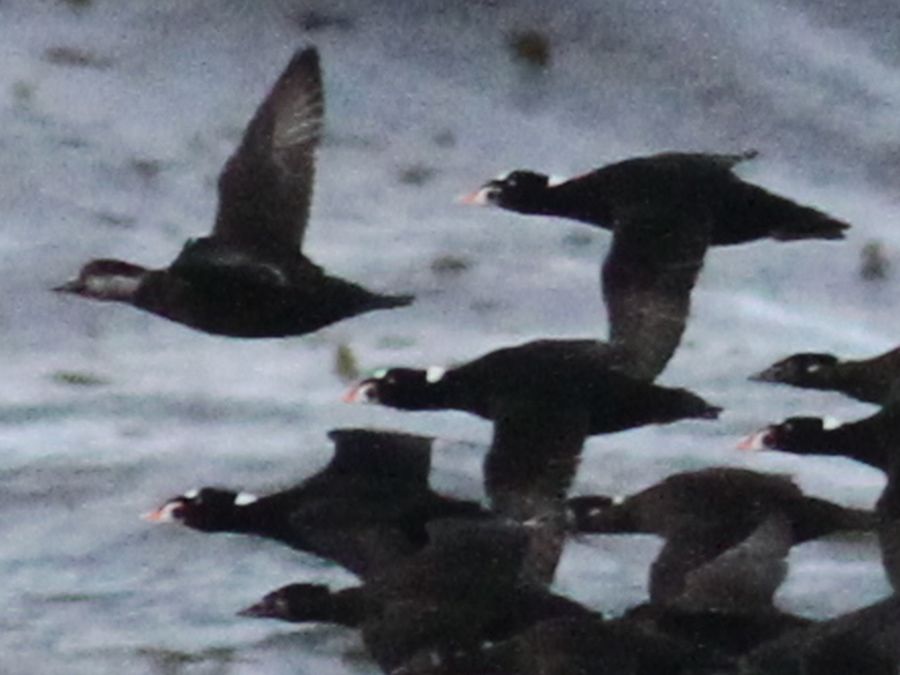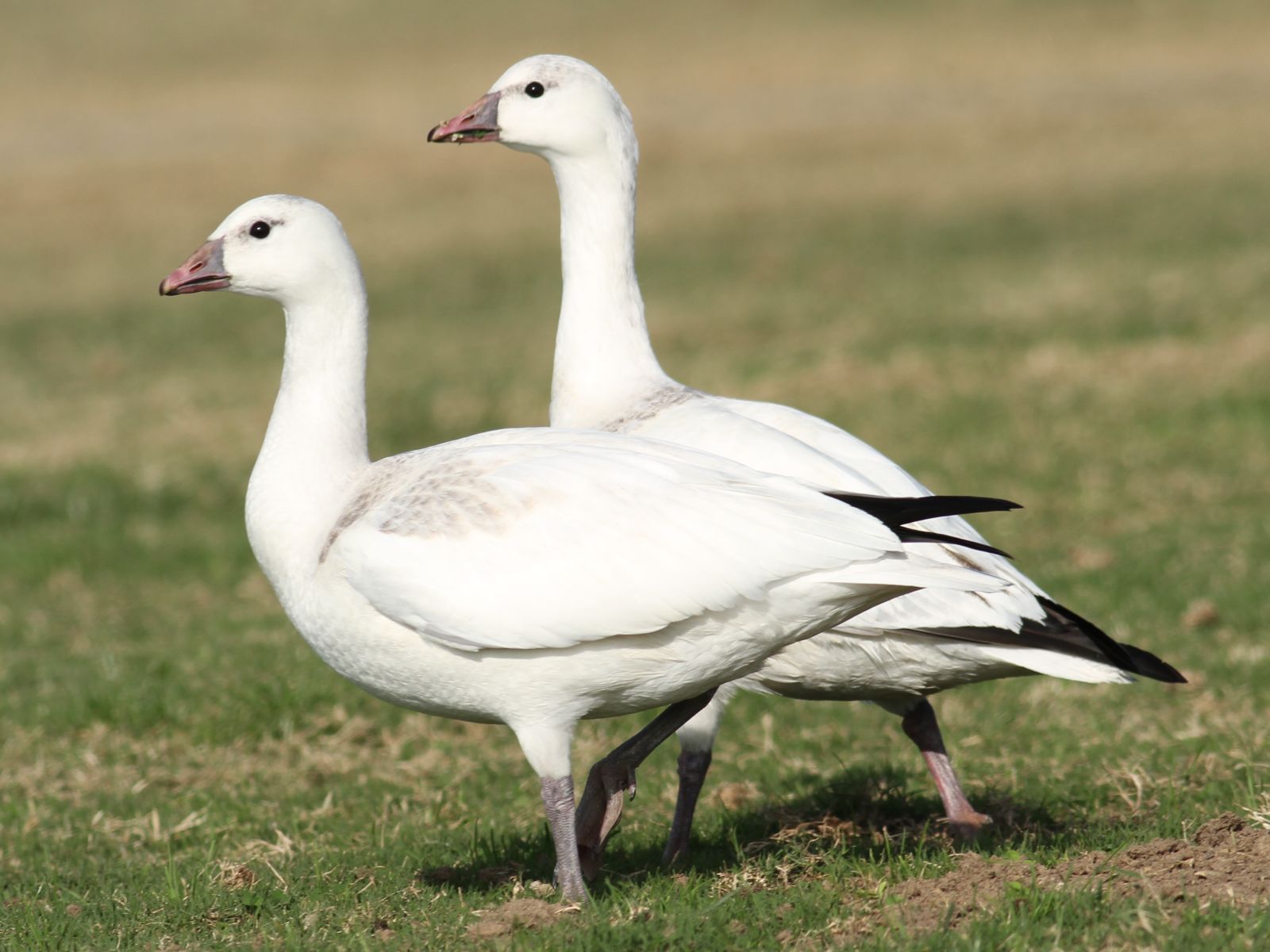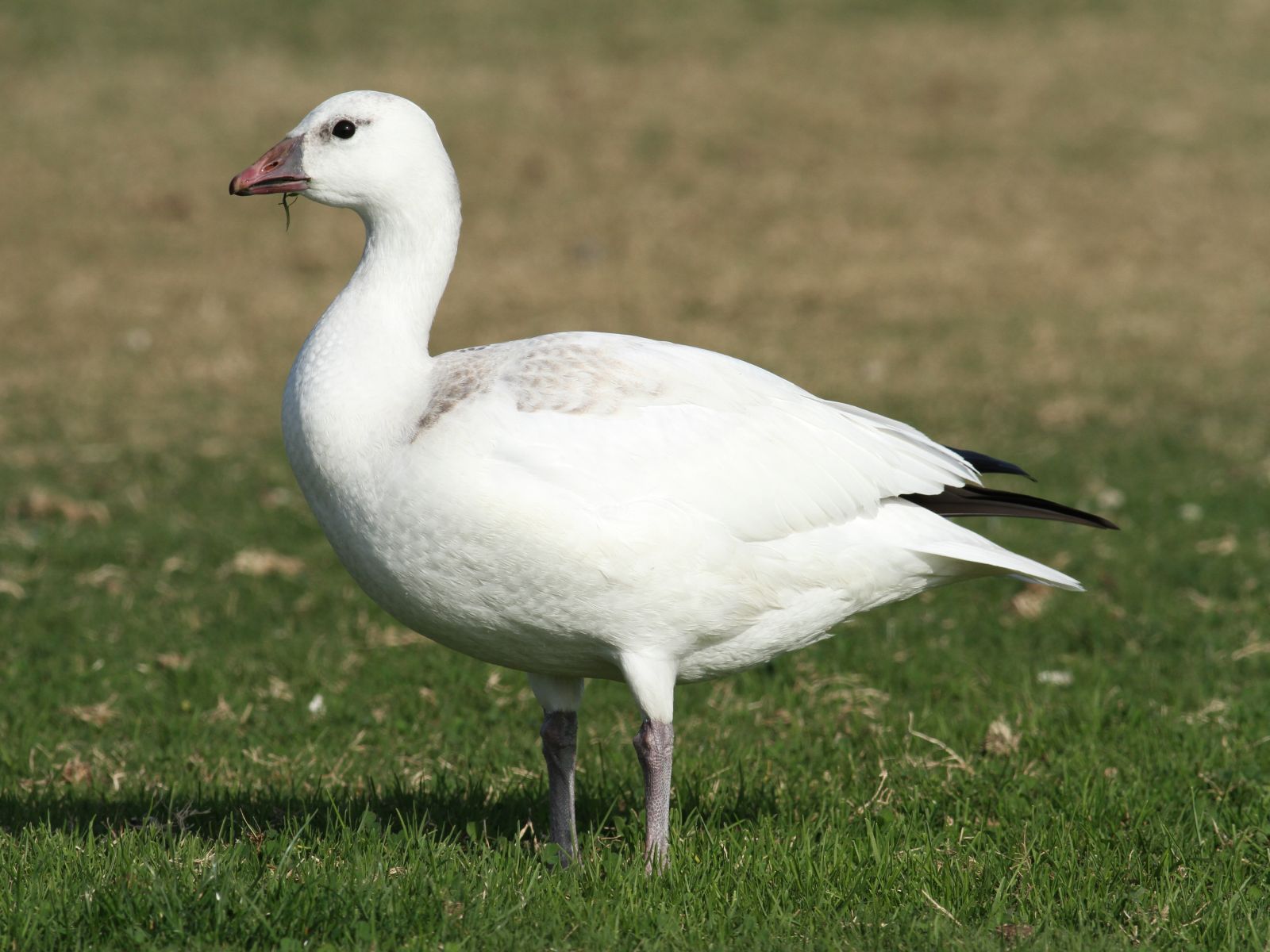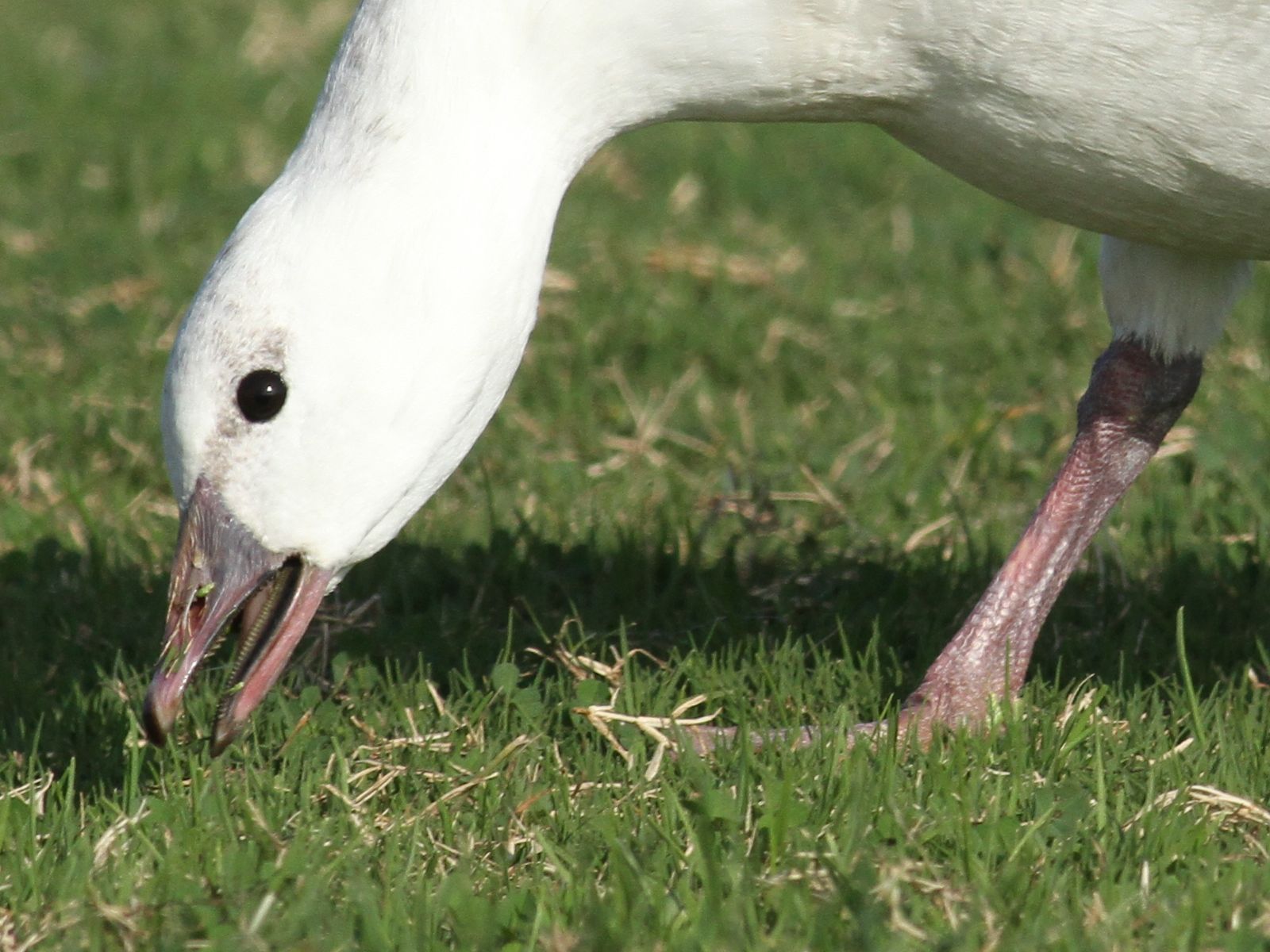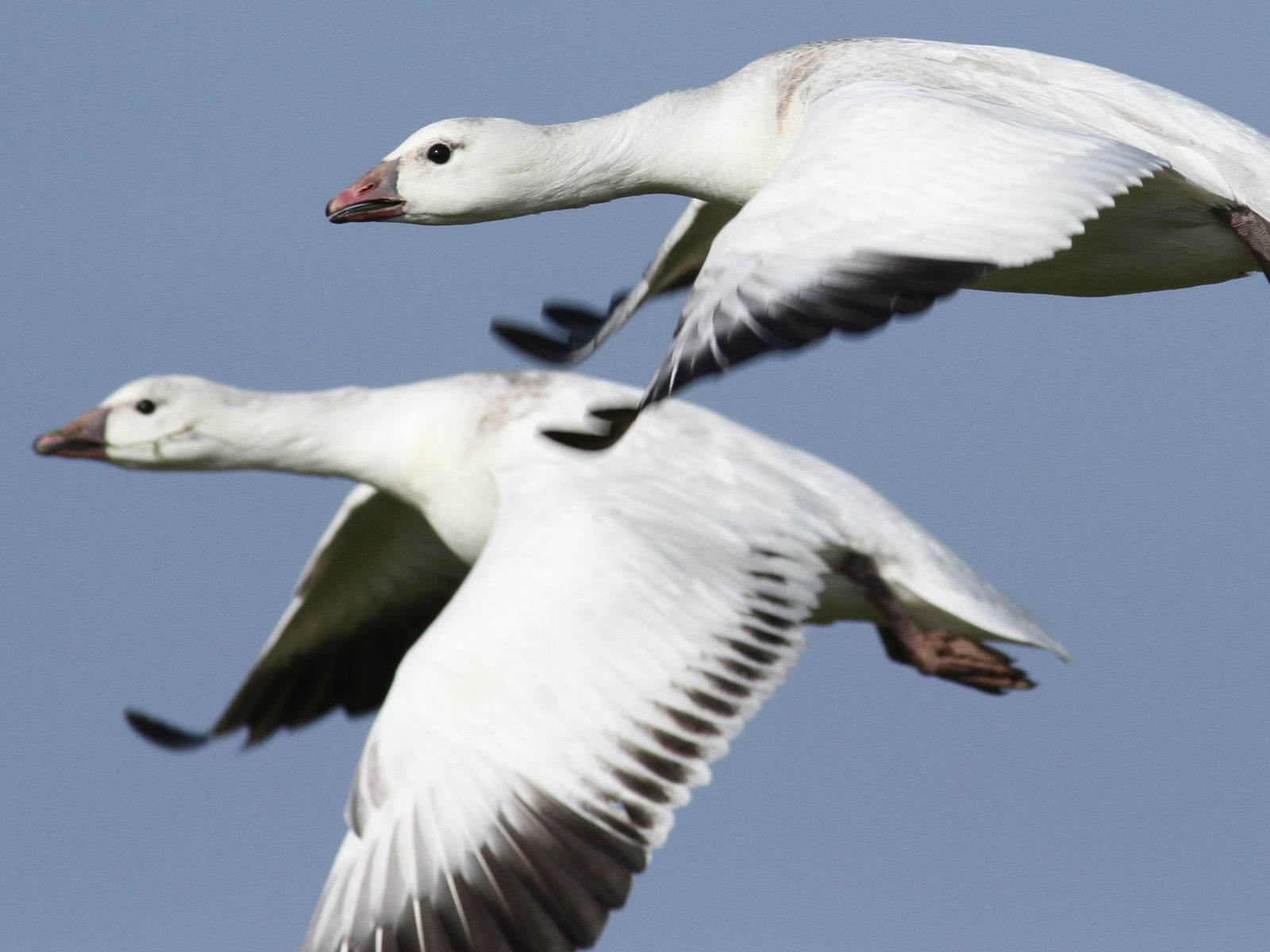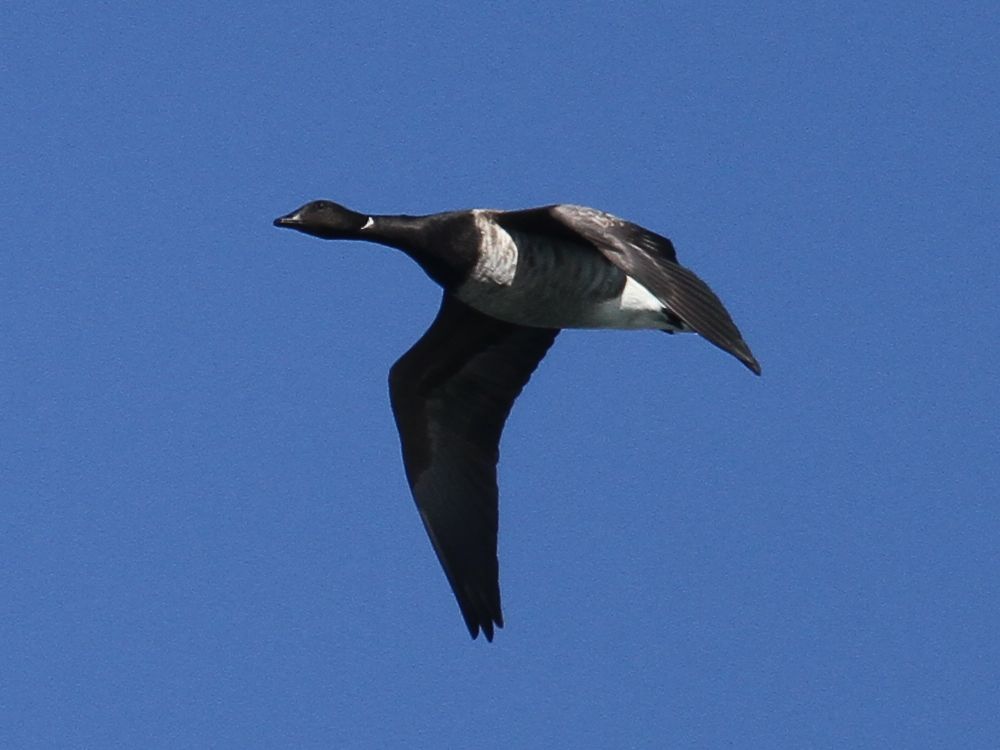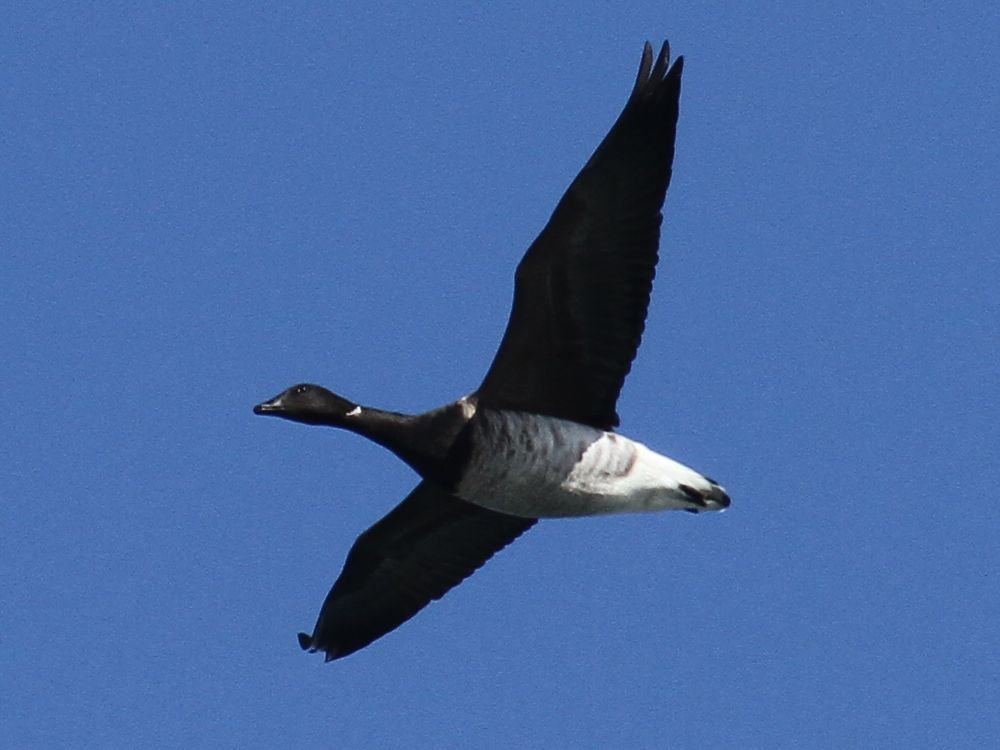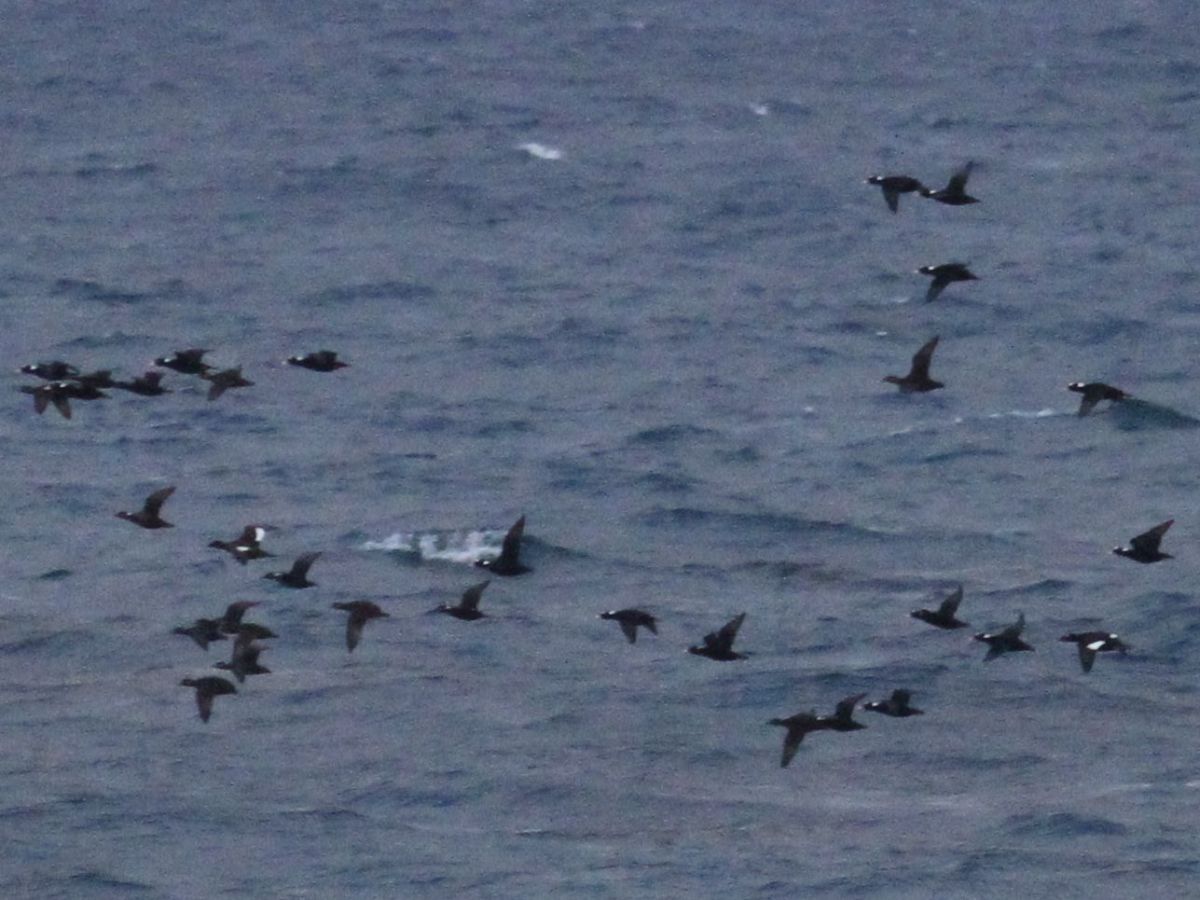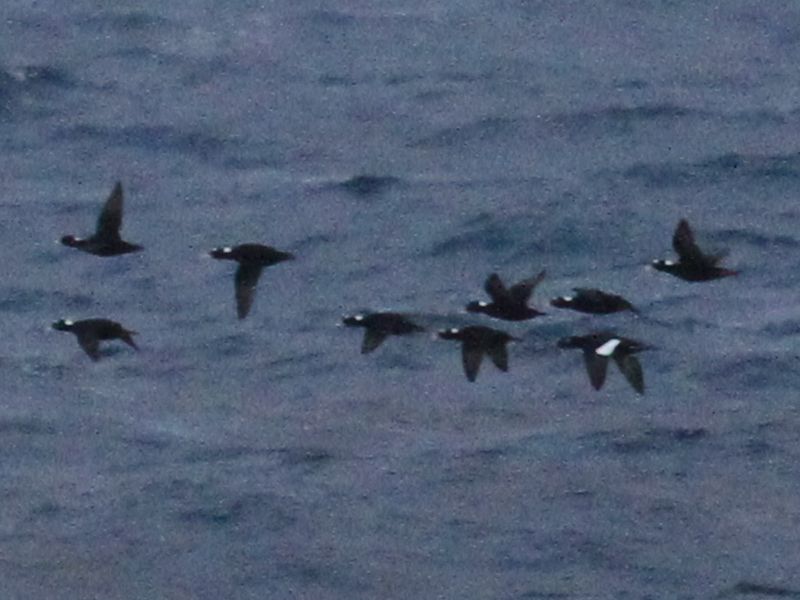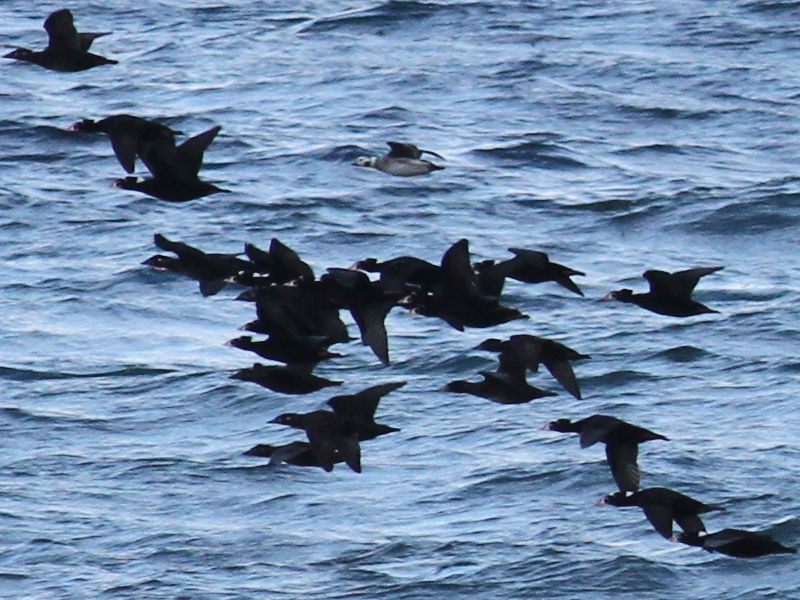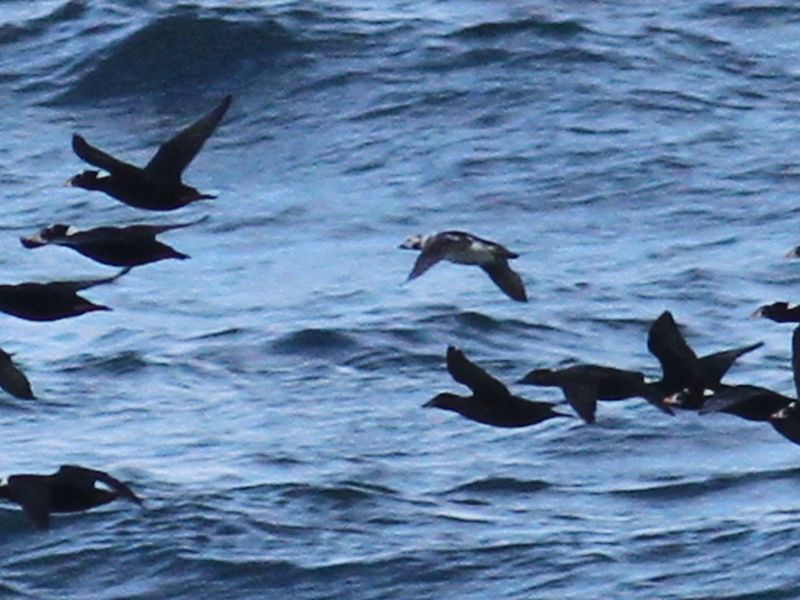[All photographs copyright, Gary Nunn 2013] – It was barely getting light this morning when I spotted a small white-bellied duck careening wildly along the edge of the kelp beds at Pt. La Jolla. It looked interesting so I leveled the camera on it and snagged a dozen shots as the duck pulled up and stalled to sit down on the water outside of the kelp. It was 7:01 a.m. to be exact and my Canon 7D camera sensor was having trouble capturing images at all, even at ISO 3200! From the camera back the duck appeared white collared and distinctively white bellied. It also had a dark crown and cheek patch kind of extending as a rear strap behind the face. Finally, the wings were entirely blackish both on the upper and under surface, in particular the striking dark underwing coverts were noticeable. Evidently my hoped for Long-tailed Duck Clangula hyemalis had appeared as early in the day as possible! I guess I should not complain about poor lighting for photography, birds just come by you when they want to as a rule! This is my first Long-tailed Duck of the 2013-2014 winter period. Unfortunately, given the very choppy water conditions and poor lighting, other birders were unable to relocate the stationary duck in the immediate vicinity with their field scopes.

Long-tailed Duck – adult female Pt. La Jolla, La Jolla, San Diego County, California 07 Dec 2013
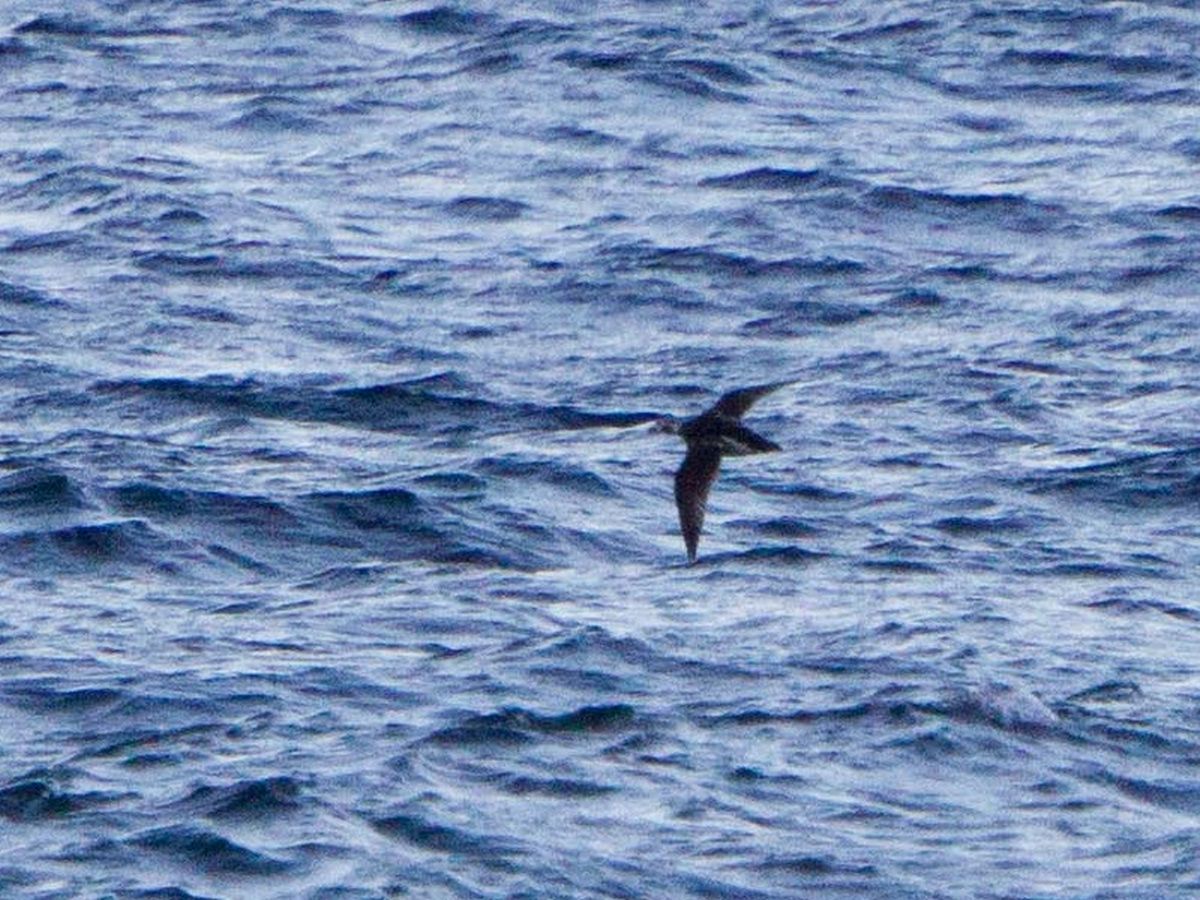
Long-tailed Duck – adult female Pt. La Jolla, La Jolla, San Diego County, California 07 Dec 2013

Long-tailed Duck – adult female Pt. La Jolla, La Jolla, San Diego County, California 07 Dec 2013

Long-tailed Duck – adult female Pt. La Jolla, La Jolla, San Diego County, California 07 Dec 2013
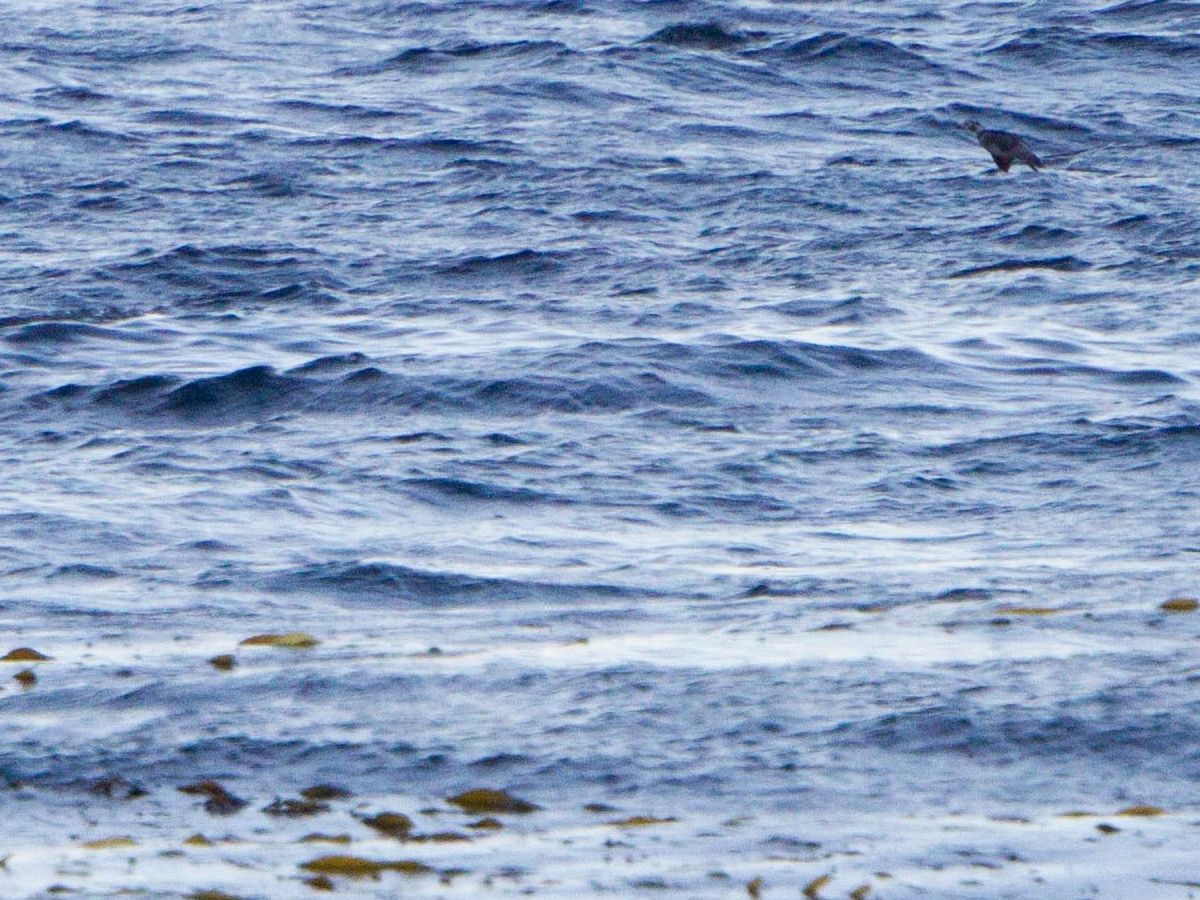
Long-tailed Duck – adult female Pt. La Jolla, La Jolla, San Diego County, California 07 Dec 2013
Buoyed by the early morning success I waited out the seawatch a few more hours but could only add a very nice looking adult basic plumaged Mew Gull Larus canus to the list. The Mew Gull flew south around the point just a short distance from the rocks and almost escaped attention. Actually this individual appears to be in fresh looking “adultlike” plumage having completed third cycle prebasic molt with just a few black feathers in the upperwing marginal coverts and slightly reduced white tips to the outer primaries.

Mew Gull – adult basic plumage Pt. La Jolla, La Jolla, San Diego County, California 07 Dec 2013

Mew Gull – adult basic plumage Pt. La Jolla, La Jolla, San Diego County, California 07 Dec 2013
